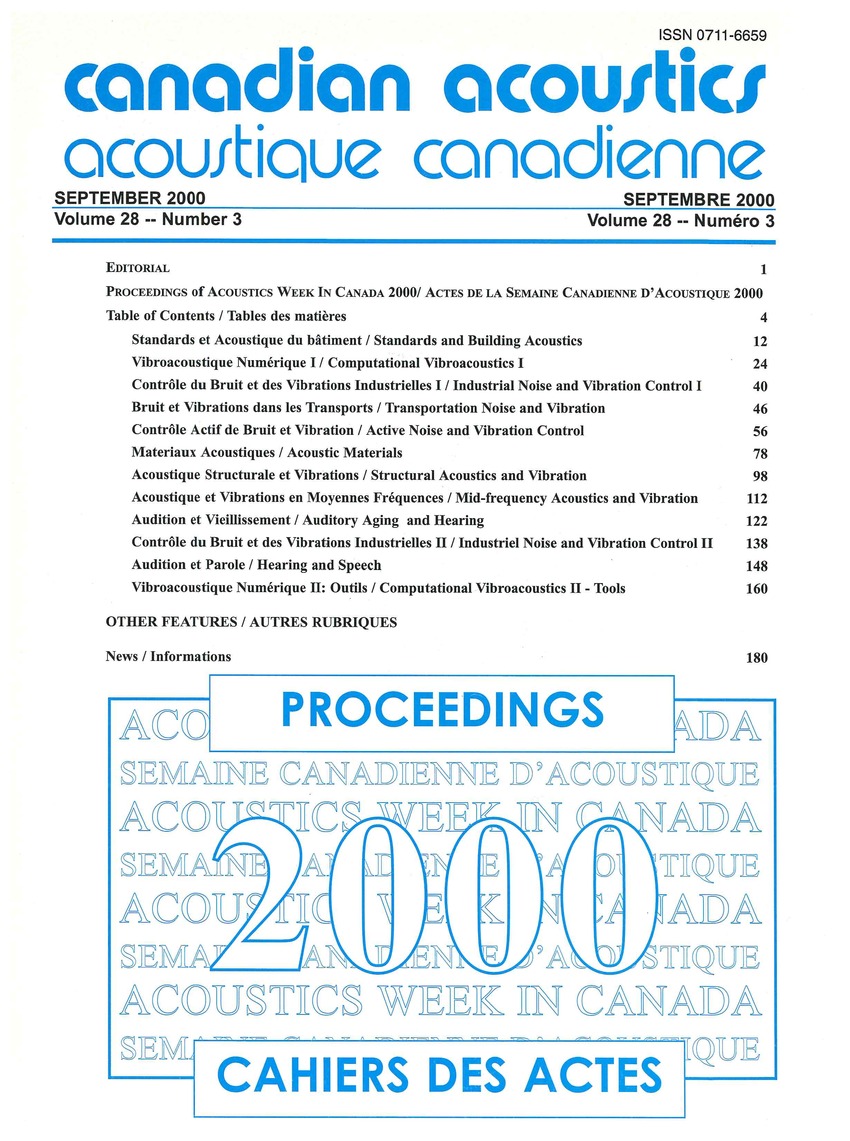Validation of 3-D poroelastic finite element from the impedance measurement of a vibrating foam sample
Keywords:
Acoustic wave transmission, Elasticity, Finite element method, Mathematical models, Porous materials, Poroelasticity, TortuosityAbstract
The real 3-D motion of porous materials was validated by comparing it with skeleton motion and acoustic coupling. The impedance of a resonant porous sample in a duct with lateral air gap was measured. A quasistatic measurement method was used to investigate both isotropic and axisymmetrical viscoelastic skeletons. For the experiment, the porous sample and the boundary conditions are so chosen that one resonance of the skeleton can be observed in the frequency range of 50 Hz to 500 Hz. The use of isotropic law is efficient when mechanical parameters are related to the kind of deformation of the material.Additional Files
Published
How to Cite
Issue
Section
License
Author Licensing Addendum
This Licensing Addendum ("Addendum") is entered into between the undersigned Author(s) and Canadian Acoustics journal published by the Canadian Acoustical Association (hereinafter referred to as the "Publisher"). The Author(s) and the Publisher agree as follows:
-
Retained Rights: The Author(s) retain(s) the following rights:
- The right to reproduce, distribute, and publicly display the Work on the Author's personal website or the website of the Author's institution.
- The right to use the Work in the Author's teaching activities and presentations.
- The right to include the Work in a compilation for the Author's personal use, not for sale.
-
Grant of License: The Author(s) grant(s) to the Publisher a worldwide exclusive license to publish, reproduce, distribute, and display the Work in Canadian Acoustics and any other formats and media deemed appropriate by the Publisher.
-
Attribution: The Publisher agrees to include proper attribution to the Author(s) in all publications and reproductions of the Work.
-
No Conflict: This Addendum is intended to be in harmony with, and not in conflict with, the terms and conditions of the original agreement entered into between the Author(s) and the Publisher.
-
Copyright Clause: Copyright on articles is held by the Author(s). The corresponding Author has the right to grant on behalf of all Authors and does grant on behalf of all Authors, a worldwide exclusive license to the Publisher and its licensees in perpetuity, in all forms, formats, and media (whether known now or created in the future), including but not limited to the rights to publish, reproduce, distribute, display, store, translate, create adaptations, reprints, include within collections, and create summaries, extracts, and/or abstracts of the Contribution.


